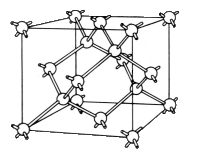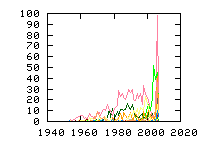Showing
10, 25, 50, 100, 500, 1000, all papers per page.
Sort by:
last publication date,
older publication date,
last update date.
- 1. Phys. Rev. Lett. 87, 165506 (2001) , “Defect Generation by Hydrogen at the Si-SiO2 Interfaces”, S. N. Rashkeev, D. M. Fleetwood, R. D. Schrimpf, and S. T. PantelidesHydrogen is known to passivate Si dangling bonds at the Si-SiO 2 interface, but the subsequent arrival of H + at the interface causes depassivation of Si-H bonds. Here we report first-principles density functional calculations, showing that, contrary to conventional... (Read more)
- 2. Appl. Phys. Lett. 81, 1839 (2002) , “Dual behavior of H+ at Si–SiO2 interfaces: Mobility versus trapping”, S. N. Rashkeev, D. M. Fleetwood, R. D. Schrimpf, S. T. PantelidesWe report first-principles calculations showing that protons in the vicinity of a Si–SiO2 interface can behave in two different ways. At an abrupt interface without suboxide bonds (Si–Si bonds at the oxide side of the interface) H+ does not become trapped but migrates... (Read more)
- 3. Phys. Rev. Lett. 93, 245901 (2004) , “Ab Initio Calculations to Model Anomalous Fluorine Behavior”, Milan Diebel, Scott T. Dunhammplanted fluorine is observed to behave unusually in silicon, manifesting apparent uphill diffusion and reducing diffusion and enhancing activation of boron. In order to investigate fluorine behavior, we calculate the energy of fluorine defect structures in the framework of density functional theory. In addition to identifying the ground-state configuration and diffusion migration barrier of a single fluorine atom in silicon, a set of energetically favorable fluorine defect structures were found (FnVm). The decoration of vacancies and dangling silicon bonds by fluorine suggests that fluorine accumulates in vacancy-rich regions, which explains the fluorine redistribution behavior reported experimentally. (Read more)
- 4. Phys. Rev. B 71, 193202 (2005) , “EPR and theoretical studies of negatively charged carbon vacancy in 4H-SiC”, T. Umeda, Y. Ishitsuka, J. Isoya, N. T. Son, E. Janz?n, N. Morishita, T. Ohshima, H. Itoh, A. GaliCarbon vacancies (VC) are typical intrinsic defects in silicon carbides (SiC) and so far have been observed only in the form of positively charged states in p-type or semi-insulating SiC. Here, we present electron-paramagnetic-resonance (EPR) and photoinduced EPR (photo-EPR)... (Read more)
- 5. Phys. Rev. Lett. 96, 145501 (2006) , “Identification of the Carbon Antisite-Vacancy Pair in 4H-SiC”, T. Umeda, N. T. Son, J. Isoya, E. Janzn, T. Ohshima, N. Morishita, H. Itoh, A. Gali, M. BockstedteThe metastability of vacancies was theoretically predicted for several compound semiconductors alongside their transformation into the antisite-vacancy pair counterpart; however, no experiment to date has unambiguously confirmed the existence of antisite-vacancy pairs. Using electron paramagnetic resonance and first principles calculations we identify the SI5 center as the carbon antisite-vacancy pair in the negative charge state (CSiVC-) in 4H-SiC. We suggest that this defect is a strong carrier-compensating center in n-type or high-purity semi-insulating SiC. (Read more)SiC| ENDOR EPR Theory electron-irradiation optical-spectroscopy thermal-meas./anneal-exp.| -1 -2 1.0eV~ 13C 29Si C1h C3v Carbon Csi EI5/6 HEI1 HEI5/6 Nitrogen P6/7 SI5 Silicon Vc antisite bistable/metastable dangling-bond n-type pair(=2) semi-insulating vacancy .inp files: SiC/SI5_C1h SiC/SI5_80K SiC/SI5_100K | last update: Takashi Fukushima
- 6. Phys. Rev. B 73, 033204 (2006) , “Electrical characterization of metastable carbon clusters in SiC: A theoretical study”, A. Gali, N. T. Son, E. JanznFirst-principles calculations carried out in 3C- and 4H-SiC show that small metastable carbon clusters can be created in irradiated SiC. The metastable carbon clusters possess occupation levels in the p-type as well as in the n-type 4H-SiC. Depending on the... (Read more)
- 7. Phys. Rev. B 74, 165404 (2006) , “Density functional study of gold atoms and clusters on a graphite (0001) surface with defects”, Jaakko Akola and Hannu HäkkinenAdsorption of gold atoms and clusters (N=6) on a graphite (0001) surface with defects has been studied using density functional theory. In addition to perfect graphite (0001), three types of surface defects have been considered: a surface vacancy (hole), a pyridinelike defect comprising three... (Read more)
- 8. Phys. Rev. B 74, 174101 (2006) , “First-principles study of the intrinsic defects in PbFCl”, Bo Liu, Zeming Qi, and Chaoshu ShiFirst-principles pseudopotential calculations have been performed to investigate intrinsic defects including vacancies, interstitials, antisite defects, as well as Schottky and Frenkel defects in PbFCl crystals. For the isolated vacancies and interstitials, their formation energies are critically... (Read more)
- 9. Appl. Phys. Lett. 88, 253504 (2006) , “Single silicon vacancy-oxygen complex defect and variable retention time phenomenon in dynamic random access memories”, T. Umeda, K. Okonogi, K. Ohyu, S. Tsukada, K. Hamada, S. Fujieda, and Y. MochizukiThe variable retention time phenomenon has recently been highlighted as an important issue in dynamic random access memory (DRAM) technology. Based on electrically detected magnetic resonance and simulation studies, we suggest that a single Si vacancy-oxygen complex defect is responsible for this... (Read more)
- 10. Appl. Phys. Lett. 89, 082908 (2006) , “Negative oxygen vacancies in HfO2 as charge traps in high-k stacks”, J. L. Gavartin, D. Muñoz Ramo, A. L. Shluger, G. Bersuker, and B. H. LeeThe optical excitation and thermal ionization energies of oxygen vacancies in m-HfO2 are calculated using a non-local density functional theory with atomic basis sets and periodic supercell. The thermal ionization energies of negatively charged V– and... (Read more)
Showing
10, 25, 50, 100, 500, 1000, all papers per page.
Sort by:
last publication date,
older publication date,
last update date.
All papers (3399)
Updated at 2010-07-20 16:50:39
Updated at 2010-07-20 16:50:39
(view as: tree
,
cloud
)
| 1329 | untagged |
Materials
(111 tags)
Others(101 tags)
Technique
(46 tags)
Details
(591 tags)
Bond(35 tags)
Defect(interstitial)(18 tags)
Defect(vacancy)(15 tags)
Defect-type(19 tags)
Element(65 tags)
Energy(8 tags)
Isotope(56 tags)
Label(303 tags)
Sample(17 tags)
Spin(8 tags)
Symmetry(15 tags)

